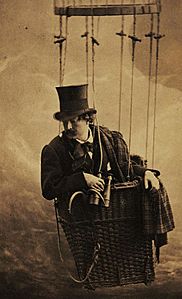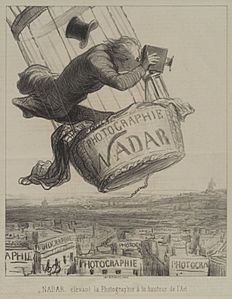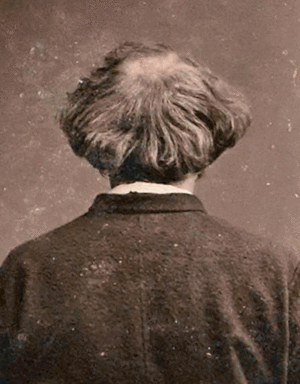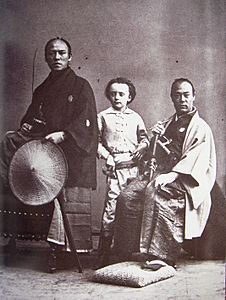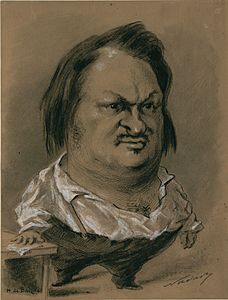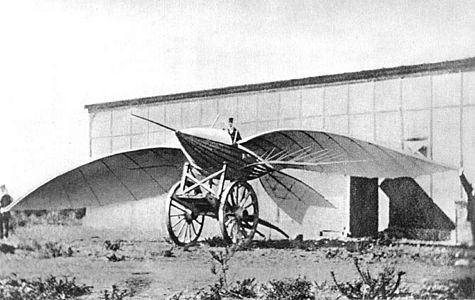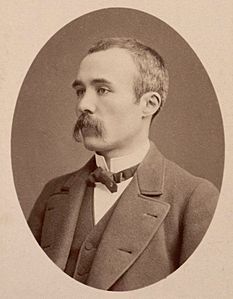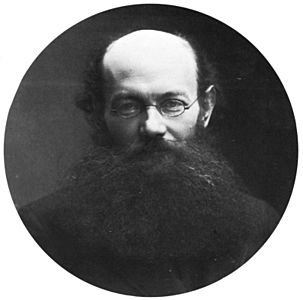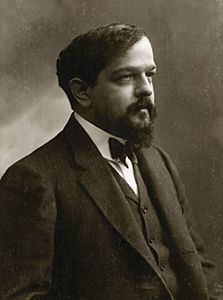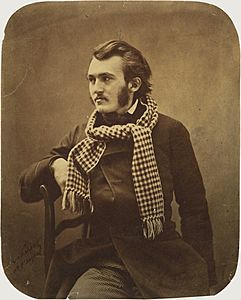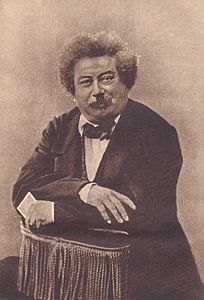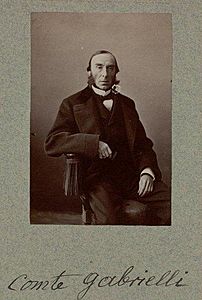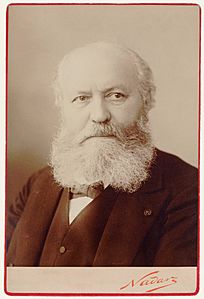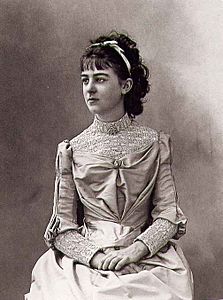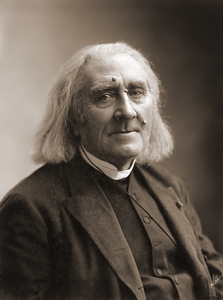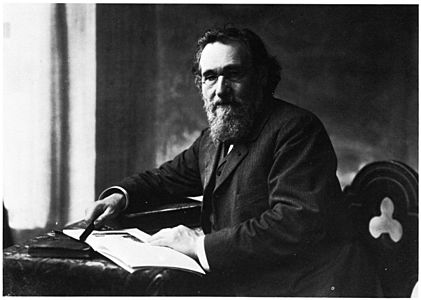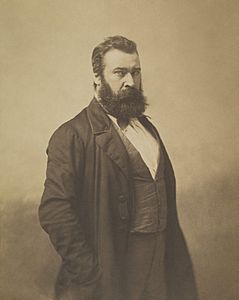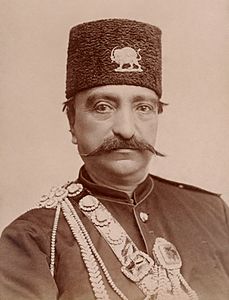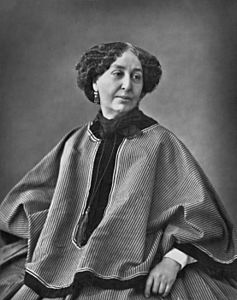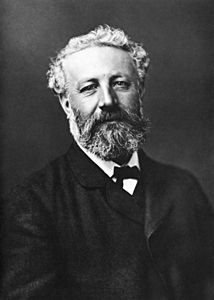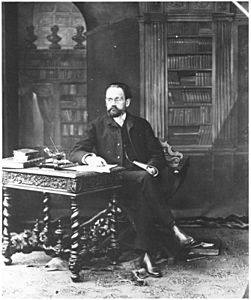Nadar facts for kids
Quick facts for kids
Nadar
|
|
|---|---|

Self-portrait of Nadar, c. 1860
|
|
| Born |
Gaspard-Félix Tournachon
6 April 1820 Paris, France
|
| Died | 20 March 1910 (aged 89) Paris, France
|
| Resting place | Père Lachaise Cemetery |
| Nationality | French |
| Occupation | Photographer caricaturist journalist novelist balloonist |
| Known for | Pioneer in photography |
| Parent(s) | Victor Tournachon |
| Signature | |
Gaspard-Félix Tournachon (born April 6, 1820 – died March 20, 1910) was a French artist. He was known by his nickname, Nadar. He was a talented photographer, a funny cartoonist, a writer, and even a balloon pilot! Nadar was also a big supporter of flying machines that were heavier than air.
In 1858, Nadar made history by taking the very first aerial photographs. These were pictures taken from high up in the sky. Many of his famous photo portraits are now kept in important national collections. After Nadar passed away, his son, Paul Nadar, continued his photography business.
Contents
Nadar's Amazing Life Story
Gaspard-Félix Tournachon was born in April 1820 in Paris, France. His father, Victor Tournachon, worked as a printer and bookseller. Nadar started studying medicine, but he had to stop because his family faced money problems after his father died.
Early Career and Nickname
Nadar began his career drawing cartoons and writing stories for different newspapers. He became friends with a group of creative people in Paris, including famous writers like Charles Baudelaire. His friends gave him the fun nickname "Tournadar," which later became "Nadar." His cartoons were first published in a newspaper called Le Charivari in 1848. He even started his own funny magazines.
Becoming a Photography Pioneer
Nadar soon moved from drawing cartoons to taking photographs. He took his first pictures in 1853. In 1854, he opened his own photography studio in Paris. He later moved to a bigger studio in 1860. Nadar photographed many important people of his time. These included politicians, actors like Sarah Bernhardt, and famous writers such as Victor Hugo and Jules Verne. He also photographed painters like Eugène Delacroix and musicians like Franz Liszt.
Nadar liked to take natural-looking portraits. He used natural daylight and avoided fancy backgrounds or too many props. In 1886, he and his son Paul created what might be the first "photo-interview." They interviewed a very old scientist named Michel Eugène Chevreul, who was 100 years old! This interview was published in a newspaper.
-
Nadar elevating Photography to Art. A drawing by Honoré Daumier, 1863
Innovations in Photography and Flight
In 1858, Nadar became the first person to take photos from the air. He used a special photography method called the wet plate collodion process. This was tricky because the photo plates needed to be prepared and developed while the balloon was in the air. Nadar found a way to make his balloon baskets more stable for photography.
He also was a pioneer in using artificial light for photos. He took pictures deep underground in the Catacombs of Paris. This means he was the first to photograph both from the air and underground! In 1867, he started the first magazine about air travel, called L'Aéronaute.
In 1863, Nadar asked a famous balloon pilot, Eugène Godard, to build a huge balloon. It was called Le Géant (The Giant) and was about 196 feet (60 meters) high. When Le Géant visited Brussels, Nadar used special barriers to keep the crowds safe. These barriers are still known as "Nadar barriers" in Belgium today. Even after Le Géant was damaged, Nadar rebuilt it and continued his flights. He could even take a dozen passengers up at once, serving them food and drinks!
Le Géant inspired the famous writer Jules Verne to write his book Five Weeks in a Balloon. Nadar himself was the inspiration for the character Michael Ardan in Verne's book From the Earth to the Moon. In 1862, Verne and Nadar even started a society to encourage air travel using machines heavier than air. Nadar was the president, and Verne was the secretary.
Nadar's Role in the Siege of Paris
During the Siege of Paris in 1870–71, Nadar played a key role. He helped organize balloon flights to carry mail out of the city. This allowed people inside Paris to connect with the outside world. This was the world's first airmail service!
Later Years and Legacy
In April 1874, Nadar let a group of painters use his photo studio. This was for the very first exhibition of the Impressionists, a new style of painting. He also photographed Victor Hugo on his deathbed in 1885.
On April 1, 1895, Nadar handed over his Paris photography studio to his son, Paul. Nadar then moved to Marseille and opened another studio in 1897. He returned to Paris in 1909.
Nadar passed away in 1910 at the age of 89. He was buried in the Père Lachaise Cemetery in Paris. His son, Paul Nadar, continued to run the studio.
Nadar's Creative Works
Towards the end of his life, Nadar wrote a book called Quand j’étais photographe (When I Was a Photographer). This book is full of interesting stories and examples of his photographs, including many portraits of famous people.
The painter Jean-Auguste-Dominique Ingres sometimes sent his clients to Nadar to have their photos taken. These photos would then be used as studies for Ingres's paintings.
Gallery of Portraits
-
Caricature of Honoré de Balzac, 1850
-
Gustave Doré (1859)
-
Charles Gounod in 1890
-
Nasser al-Din Shah Qajar, king of Iran 1848–1896
-
George Sand (1864)
-
Émile Zola (1895)
Images for kids
See also
 In Spanish: Nadar para niños
In Spanish: Nadar para niños


